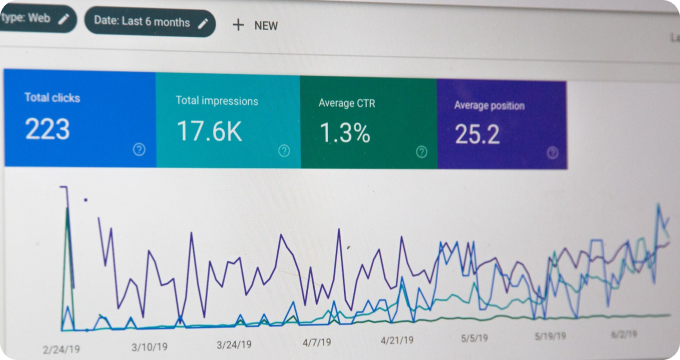5 Things I Wish I'd Known About Multi Carrier Shipping Software Before Implementing One
- December 08, 2023
- 3 minutes
Multi-carrier shipping software is nothing short of a game-changer for businesses that need to distribute their goods across vast geographical expanses. However, like any other transformative technology, it presents challenges that, if not addressed properly, can thwart the user's experience and undermine its potential benefits. It is these challenges and how to surmount them that we will explore in this piece, drawing from the hindsight of those who have been through the process.
-
Integration into Existing Systems
Retrospectively, it is evident that the integration of multi-carrier shipping software into existing systems was not as simple as merely plugging in the software. The implementation phase is a critical juncture that calls for a comprehensive understanding of the existing systems, including their strength and limitations, to achieve a seamless fusion.
Let's take an analogy from physics to make sense of this point. Consider Newton's third law of motion states that 'for every action, there is an equal and opposite reaction.' In the context of implementing multi-carrier shipping software, any modification to the existing system (action) may evoke unforeseen reactions that could disrupt operations. Understanding the intricate web of logistics processes helps to gauge these potential reactions and allows for proactive measures to counteract them.
-
The Importance of Flexibility and Scalability
Another factor that merits serious consideration is the flexibility and scalability of the software. Initially, it may seem that the current requirements are all you need to focus on. However, if we look at the law of accelerating returns by renowned futurist Ray Kurzweil, we can extrapolate that progress in technology is exponential. Thus, a system that meets today's needs may fall short tomorrow.
Therefore, choosing a multi-carrier shipping software that can accommodate the growing and changing needs of the business is critical. This implies not only the ability to handle increased volume but also the capacity to adapt to new carrier services.
-
Training and Support
The complexity of multi-carrier shipping software means that a concerted effort to train the team to use it is necessary. In the euphoria of implementing a new system, the importance of training and ongoing support can be overlooked. However, the Pareto Principle, also known as the 80-20 rule, puts this into perspective. It suggests that 80% of consequences come from 20% of causes. In this case, inadequate training could lead to a majority of the challenges in using the software.
-
The Real Cost
The cost of implementing multi-carrier shipping software goes beyond the purchasing price. Additional elements like training, support, upgrades, and maintenance also contribute to the total cost of ownership (TCO). Consequently, an initially attractive pricing may turn out to be costly in the long run if these aspects are not accounted for. The concept of sunk costs, a term used in business and economics, can explain why companies may continue using an expensive system. A sunk cost is a cost that has already been incurred and cannot be recovered. Companies often fall into the sunk cost fallacy, where they continue investing in a project because they have already invested a lot, even if the project doesn't look promising.
-
Data Security
Lastly, the security of the data used and generated by the multi-carrier shipping software is paramount. Breaches in data security can lead to severe consequences for the company and its customers. Therefore, the software must adhere to stringent data security standards to protect sensitive information, a concept often known in legal parlance as 'due diligence.'
In conclusion, implementing multi-carrier shipping software is a strategic decision that can significantly optimize a business's shipping operations. However, one needs to have a holistic view of not only its potential benefits but also the challenges linked to its integration, scalability, cost, and data security. A thorough understanding of these aspects, coupled with relevant knowledge drawn from various disciplines, can indeed make this implementation a smooth and rewarding experience.
Learn More
Unleash the power of efficiency and cost-effectiveness in your business by diving deeper into our enlightening blog posts about multi carrier shipping software. For an unbiased, comprehensive view, the reader is encouraged to explore our meticulously compiled rankings of the Best Multi Carrier Shipping Software.
Popular Posts
-
 4 Compelling Reasons Why Your Business Needs Multi Carrier Shipping Software
4 Compelling Reasons Why Your Business Needs Multi Carrier Shipping Software
-
 Debunking X Myths About Multi Carrier Shipping Software
Debunking X Myths About Multi Carrier Shipping Software
-
 5 Things I Wish I'd Known About Multi Carrier Shipping Software Before Implementing One
5 Things I Wish I'd Known About Multi Carrier Shipping Software Before Implementing One
-
 How to Hire the Right Multi Carrier Shipping Software Provider
How to Hire the Right Multi Carrier Shipping Software Provider
-
 Ask These Questions to a Multi Carrier Shipping Software Provider to Choose the Right One for Your Business
Ask These Questions to a Multi Carrier Shipping Software Provider to Choose the Right One for Your Business






